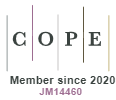New Literacies and Inclusion of deaf students: ChatGPT in the context of assistive technology for teaching portuguese as an L2 in the written modality
DOI:
https://doi.org/10.5585/52.2025.28294Keywords:
inclusive education, deaf education, new literacies, assistive technology, ChatGPTAbstract
This study aims to investigate the use of ChatGPT as an assistive technology for teaching Portuguese as an L2 to deaf students. The research is based on the theory of new literacies, studies on deaf education and assistive technology. The methodology adopts a qualitative approach for conducting exploratory research, a bibliographic review, and an applied study. The results indicate that ChatGPT assists deaf students in revising and correcting their writing, expanding their vocabulary, understanding linguistic rules, and creating materials for teaching and learning Portuguese as an L2. It is concluded that new literacies enable a new ethos in the use of ChatGPT as an assistive technology in cyberspace for teaching Portuguese as an L2 to deaf students, promoting inclusion, equity, and the appreciation of deaf culture.
Downloads
References
AZAMBUJA, C. B. da R. de. O ethos dos novos letramentos em narrativas de docentes de um curso de licenciatura em letras. 2023. 64f. Trabalho de Conclusão de Curso (Graduação em Licenciatura em Letras - Português e Literatura da Língua Portuguesa) – Universidade Federal do Pampa, Campus Bagé, Bagé, 2023. Disponível em: https://repositorio.unipampa.edu.br/jspui/handle/riu/8098. Acesso em: 21 fev. 2025.
BRASIL Conselho Nacional de Saúde. Resolução nº 510, de 07 de abril de 2016. Publicada no DOU nº 98, terça-feira, 24 maio 2016 - seção 1, p. 44, 45, 46.
BUZATO, M. Entre a fronteira e a periferia: linguagem e letramento na inclusão digital. 2007. 284f. Tese (Doutorado em Linguística Aplicada) – Instituto de Estudos da Linguagem, Universidade Estadual de Campinas, Campinas, 2007. Disponível em: https://repositorio.unicamp.br/Busca/Download?codigoArquivo=492596&tipoMidia=0. Acesso em: 21 fev. 2025.
CORDEIRO, A. M.; OLIVEIRA, G. M.; RENTERÍA, J. M.; GUIMARÃES, C. A. Revisão sistemática: uma revisão narrativa. Revista do Colégio Brasileiro de Cirurgiões, v. 34, n. 6, p. 428–431, dez. 2007. DOI: https://doi.org/10.1590/S0100-69912007000600012. Acesso em: 21 fev. 2025.
FERREIRA BRITO, L. Língua de sinais e educação do surdo: uma visão histórico-cultural. São Paulo: Summus, 1995.
FRANCO, T. Bullying contra surdos: a manifestação silenciosa da resiliência. Paraná: Appris Editora, 2014.
GEE, J. P. Social linguistics and literacies: Ideology in discourses. Routledge, 1996.
GESSER, A. Libras? Que língua é essa? Crenças e preconceitos em torno da língua de sinais e da realidade surda. [Prefácio de Pedro M. Garcez]. São Paulo: Parábola Editorial, 2009. (Estratégias de ensino; 14).
GIL, A. C. Métodos e técnicas de pesquisa social. 6. ed. São Paulo: Atlas, 2002.
LANKSHEAR, C.; KNOBEL, M. New literacies: Everyday practices and classroom learning. Maidenhead, UK: Open University Press, 2006.
LANKSHEAR, C.; KNOBEL, M. A new literacies sampler. New York: Peter Lang, 2007.
LANKSHEAR, C.; KNOBEL, M. New literacies. 3. ed. New York: Mc graw Hill Open University Press, 2011.
LÉVY, P. Cibercultura. 2. ed., São Paulo: Editora 34, 1999
PERLIN, G.; STROBEL, K. Teorias da educação e estudos surdos. Florianópolis: CCE/UFSC, 2009.
QUADROS, R. M.; KARNOPP, L. B. Língua brasileira de sinais: estudos linguísticos. Porto Alegre: Artmed, 2004.
SILVA, Q. P. da; MENDES, N. F. O.; SANTOS, S. K. da S. de L. Tecnologia assistiva no processo de ensino-aprendizagem de Surdos. Revista Principia, [S. l.], v. 1, n. 50, p. 23–33, 2020. DOI: 10.18265/1517-0306a2020v1n50p23-33. Disponível em: https://periodicos.ifpb.edu.br/index.php/principia/article/view/3360. Acesso em: 25 fev. 2025.
STREET, B. Introduction: The new literacy studies. Cross-cultural approaches to literacy, p. 1-21, 1993.
STROBEL, K. L. As imagens do outro sobre a cultura surda. Florianópolis: Editora da UFSC, 2008.
Downloads
Published
How to Cite
Issue
Section
License
Copyright (c) 2025 Iago Ferraz Nunes, Naziozênio Antonio Lacerda

This work is licensed under a Creative Commons Attribution-NonCommercial-ShareAlike 4.0 International License.
- Abstract 198
- PDF (Português (Brasil)) 66






